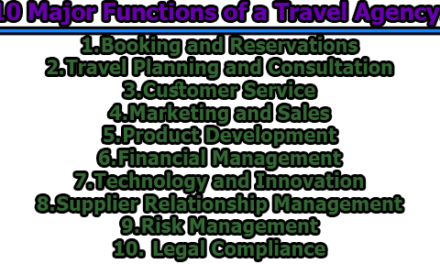How to Train Restaurant Staff for Hygiene and Sanitation:
Maintaining impeccable hygiene and sanitation in a restaurant is not only crucial for compliance with health and safety standards but is also fundamental to the success and reputation of the establishment. Poor hygiene practices can lead to foodborne illnesses, customer dissatisfaction, and legal issues. Therefore, it is imperative for hospitality managers to institute thorough training programs for restaurant staff, ensuring that they not only understand but consistently implement the best practices in hygiene and sanitation. In this article, we will explore how to train restaurant staff for hygiene and sanitation.
1. Assessment of Current Situation: Before initiating any training program, it is vital to assess the current state of hygiene and sanitation within the restaurant. This assessment serves as the foundation for identifying areas that require improvement. Utilize tools such as checklists, audits, and inspections to comprehensively evaluate the strengths and weaknesses of the existing practices. Simultaneously, review local and national regulations and guidelines to ensure that the restaurant is in compliance with the mandatory standards. This initial evaluation provides valuable insights into the specific training needs and establishes a benchmark against which progress can be measured.
2. Creation of a Hygiene and Sanitation Policy: A robust hygiene and sanitation policy is the cornerstone of any effective training program. This document outlines the rules and responsibilities of restaurant staff concerning hygiene and sanitation practices. The policy should cover a spectrum of areas, including personal hygiene, food handling, cleaning and disinfection, waste management, pest control, and emergency procedures. To ensure buy-in and a sense of ownership, it is crucial to involve the staff in the creation of this policy. Make the document clear, concise, and easily accessible to all employees. Regular updates are essential to keep the policy aligned with changing regulations and to incorporate feedback from staff and ongoing evaluations.
3. Providing Regular Training and Feedback: Training should be viewed as an ongoing, dynamic process rather than a one-time event. Regular training sessions are essential to instill and reinforce the principles of hygiene and sanitation in the minds of the staff. These sessions should cover both the basics and the specifics of the restaurant’s hygiene and sanitation practices. Utilize diverse training methods such as live demonstrations, quizzes, informative videos, and visually engaging posters to cater to different learning styles and keep the training sessions interactive. Regularly monitor and evaluate staff performance to identify areas for improvement and provide constructive feedback. Recognition and positive reinforcement for adherence to hygiene standards can further motivate the staff to consistently follow best practices.
4. Implementation of a Hygiene and Sanitation System: A well-defined hygiene and sanitation system is imperative for translating policy into practice. This system comprises a set of procedures and practices that ensure the consistent application of hygiene and sanitation standards in the restaurant. Elements of the system include schedules, checklists, logs, labels, and signs, which guide staff in their daily tasks. It is equally important to provide the necessary equipment, supplies, and resources to support the system effectively. Regular reviews and audits are essential to ensure that the system remains current, effective, and efficient. This ongoing evaluation allows for adjustments and improvements in response to changing circumstances and feedback from staff and customers.
5. Training on Personal Hygiene: Personal hygiene is a fundamental aspect of maintaining a clean and safe restaurant environment. Staff members must be well-versed in the best practices for personal hygiene to prevent the spread of contaminants. Training in personal hygiene should include proper handwashing techniques, the use of disposable gloves when handling food, and guidelines for maintaining clean uniforms and grooming standards. Emphasize the importance of regular health check-ups for staff to identify and address any potential health issues promptly.
6. Training on Food Handling: Proper food handling is critical to prevent foodborne illnesses and ensure the safety of customers. Training in food handling should cover areas such as safe food storage, avoiding cross-contamination, proper thawing and cooking procedures, and monitoring food temperatures. Staff should be educated on the potential risks associated with mishandling food and the importance of following established protocols to guarantee the quality and safety of the dishes served.
7. Training on Cleaning and Disinfection: Maintaining a clean and sanitized environment is paramount in a restaurant. Training in cleaning and disinfection should cover the proper use of cleaning chemicals, the cleaning schedule for different areas of the restaurant, and the importance of thorough cleaning in preventing the growth of harmful bacteria. Staff should be trained to identify high-touch surfaces that require frequent cleaning and understand the appropriate methods for sanitizing utensils and kitchen equipment.
8. Training on Waste Management: Proper waste management is not only essential for maintaining cleanliness but also contributes to environmental sustainability. Training in waste management should include guidelines on separating different types of waste, proper disposal methods, and the importance of recycling. Staff should be educated on the potential hazards of improper waste handling and the role they play in minimizing the environmental impact of the restaurant’s operations.
9. Training on Pest Control: Pest control is a crucial element of maintaining hygiene in a restaurant. Staff should be trained to identify potential entry points for pests, recognize signs of infestation, and understand the importance of reporting any pest-related issues promptly. Training should also cover the safe and proper use of pest control measures, including the placement of traps and the use of pest-resistant storage containers.
10. Training on Emergency Procedures: In the event of an emergency, swift and organized action is crucial to ensure the safety of both staff and customers. Training on emergency procedures should cover scenarios such as fires, power outages, and medical emergencies. Staff should be familiar with evacuation routes, the location of emergency exits, and the proper use of firefighting equipment. Regular drills and simulations can help reinforce these procedures and ensure that staff is well-prepared to handle emergencies effectively.
11. Utilizing Various Training Methods: To cater to different learning styles and preferences, it is essential to employ a variety of training methods. Live demonstrations provide a hands-on approach, allowing staff to observe and practice proper techniques. Quizzes and tests can assess understanding and retention of key concepts, while informative videos offer visual reinforcement of important practices. Additionally, visually appealing posters strategically placed in work areas serve as constant reminders of the hygiene and sanitation protocols. Regularly rotating and combining these methods will keep the training sessions engaging and effective.
12. Monitoring and Evaluation of Staff Performance: Consistent monitoring and evaluation of staff performance are critical components of a successful training program. Implement tools such as surveys, tests, and reports to measure the impact of the training on staff knowledge and behavior. Regular audits of hygiene and sanitation practices in the restaurant will identify areas that may require additional training or adjustments to existing protocols. Recognize and reward exemplary performance to motivate staff and reinforce a culture of excellence in hygiene and sanitation.
13. Involving Customers and Stakeholders: Hygiene and sanitation efforts should not be confined to the internal workings of the restaurant but should extend to engaging customers and stakeholders. Transparently communicate the restaurant’s hygiene and sanitation policy to customers through various channels, such as menus, websites, and signage. Encourage feedback and actively seek input from customers on their perceptions of cleanliness and safety. Display certificates or awards attesting to the restaurant’s commitment to hygiene and sanitation. Promptly and courteously address any customer complaints or concerns related to cleanliness, showcasing a commitment to continuous improvement.
14. Building Trust and Loyalty: By actively involving customers and stakeholders in hygiene and sanitation efforts, a restaurant can build trust and loyalty. Open communication about the measures in place to ensure cleanliness fosters confidence in the restaurant’s commitment to customer well-being. Responding promptly and effectively to customer feedback, whether positive or negative, demonstrates a dedication to quality and customer satisfaction. Establishing a reputation for excellence in hygiene and sanitation contributes to long-term customer loyalty and positive word-of-mouth advertising.
In conclusion, training restaurant staff for hygiene and sanitation is a multifaceted process that requires a systematic and ongoing approach. From the initial assessment of the current situation to the creation of a comprehensive policy, implementation of a robust system, and continuous training and evaluation, each step plays a crucial role in maintaining high standards of cleanliness and safety. By incorporating various training methods, monitoring staff performance, and actively involving customers and stakeholders, a restaurant can not only meet regulatory requirements but also elevate its reputation and build lasting trust with its patrons. A commitment to excellence in hygiene and sanitation is not just a legal obligation; it is a cornerstone of success in the competitive world of hospitality.

Assistant Teacher at Zinzira Pir Mohammad Pilot School and College










